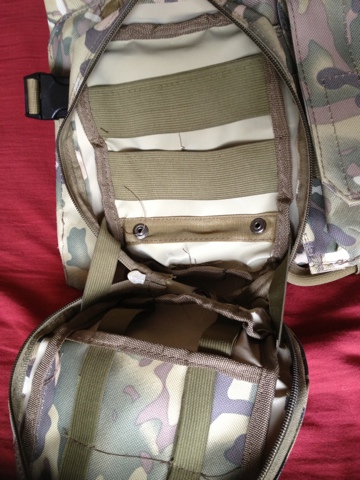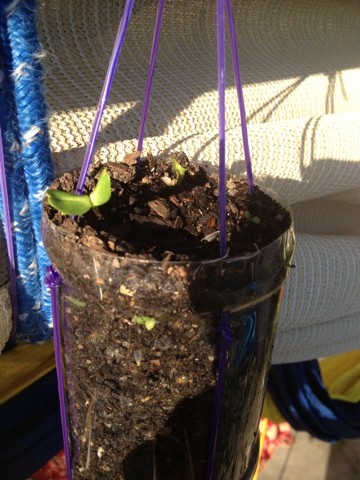
I was fortunate enough to manage to get a team together to do the
full immersion Lasertag LRP event by IRL Shooter before the season closed. I had originally been booked in for the week that I found
myself hospitalised, and missed out.
I really enjoyed the event, and thought I would give you all a heads up on what was all about, how it ran, how it worked and most importantly how it tested me.
Before going in, I met up with my team and laid out several sets of vests, webbing and plate carrier sets. Five sets in all, in various levels of hooah, to give them all a chance to suit up in "the real gear" so we all matched and looked like a unit, of sorts. My collection of coyote-brown and khaki gear really would have looked good, but all but one of them opted out. So much for my dreams of a bad-assed looking team of operators.
I wore a heavily de-tooled version of my Apocalypse Equipped loadout, as IRL Shooter have a strict no-weapon/lights/electronics rule. (yes, I know... I'm the mayor of POG central ...)

Arriving at the facility we were greeted by a cheerfully brusque NCO in
Grey Area Protective Services (GAPS) blacks, and signed us in. Prior to the event each member of our six person team had been mailed a RFID card, and documentation regarding our mission and service duties. We signed in with the NCO, I stepped up as the team leader, and we were shuttled into the main facility. we were asked if we wanted the PG language version or the R-rated, extra salty. We unanimously chose extra-salty, much to the delight of all the GAPS staff. Sr Drill Instructor Hartman would have been proud of the creative use of language.
We were greeted by a second, far less cheerful NCO, who gave us all a fairly resounding chewing out for being late, and called out one of us for being the latest, with a "drop and give me 10" pushup penalty. They were, at least, impressed with my rig, and the rig the other guy wore. Yelling.
We were loudly ushered through the comms-hut, where several workstations of controllers sat, with multiple low-light security camera feeds and communication boards were set up. Frog-marched through this area to the armory, we were fitted out with helmets, and standard black-SWAT vests for those who didn't have them already. I had booked in to have a helmet cam, so my helmet had a mounted Contour cam. More yelling.

Through to the armory proper, we were issued with our lasertaggers, very realistic M4/M203 mockups. These pieces were movie-prop quality, and each weighed around 4kg. The M203 barrel housed the lens system, much like the ones we use for Stargate LRP, but had a built in single/auto selector switch included on the electrics housing, built into the right side of the M203. A reload button was indicated, and the speaker was built in to the left side. Holographic red/green sights were minuted and we were instructed in reload, fire selection and sight lighting settings. The M4s also had a weapon light mounted. More yelling and "how to shoot and clear rooms" instruction. Being team leader I was fitted with the teams single push-to-talk Motorola, which I mounted in one of my many pouches. Always good to have the right tool for the job... Likewise, I put my own sling on my M4, which came in very handy later on. We were told we had 30 round magazines, with "unlimited reloads" so to go to town. I opted for single fire anyways.
We were instructed in the correct anti-zombie safety: we take damage incrementally if within 3m of the zombies, from a mixture of toxins and contagion. Head shots are the only true stoppers. Just because they go down doesn't mean they will stay down. Then came the safety briefing. No touching the actors. No hand-to-hand. No breaking down doors or walls. No using the M4's as pry-bars or sledgehammers.

The mission was simple: kill all the zombies we found, find the missing "Team Alpha" (we were "Team Delta") and determine what had become of the mad scientist responsible for the outbreak in the first place, in the labyrinthine medical-research facility that had been sealed off. More yelling, on the ready line, and..... GO!
The facility used for the game was a disused boot factory complex in one of the Northern suburbs of Melbourne, only a couple of streets away from my partner Anastasia's place. The weather had been quite hot, although a cool change had come through, but it was still hot on Australia Day as we entered a dark, smokey, noisy and destroyed facility. The set dressings were really good. We passed through infirmaries with rows of curtained beds, cafeterias, kitchens, toilet and office blocks, or multiple floors and levels.
The radio connection to the comms center provided instruction as to our route, local objectives and always, always "hurry-up, hurry-up". Every radio signal was expect to be followed up with a reply, and produced a sense of constant pressure. Each order needed to be relayed to my team, whilst we encountered random zombies, reanimating bodies, blinking, flashing and swinging debris to work through and around and all the while, in poor lighting. It was great.
 |
| Photo swiped from the website |
I broke our six person team into three 2-person fire teams, and we swept-and-cleared with quote good efficiency for a scratch team who had never really worked together in this fashion (two of the people were work colleagues from IT, one was one of the guys I did my first Tough Mudder with, a friend from kendo, and their friend. That last team-mate was the only one of us with actual military experience, but at least all of us had some some kind of Lasertag, paintballing or actual shooting. We kept pretty good communication up between us, and the fairly linear nature of "Patient Zero" made it easy for us, as "go forwards, consider anyone you come across to be infected, kill all the zombies" is a pretty easy SOP and Rule of Engagement to follow. I bolster that with an additional proviso, in that as there was the suggestion that there might be a second , hostile organisation present, we would "kill everything we found, unless otherwise ordered" this led to a couple of "I wasn't finished with that survivor yet" moments, but all in all we made a ruthless, efficient and effective sweep-team.
The RFID cards opened doors along the way, (plot allowing) and the radio worked (even if the storyline was occasionally verbose, but totally entertaining). Technically, a couple of elements I found might need a little work. The M4's lacked any force-feedback, but that would be a cherry on the cake of an otherwise excellent prop, but it was the gun-lights and speakers that I would recommending improving. The gunshot-sound effect, and health feedback grunts were quite soft, especially over the ambient sound effects and radio calls. This meant knowing how many shots were going off around you, your own shots, injuries to yourself and team-mates was difficult. Even of distorted, volume over quality would have been an improvement. I understand the need not to blind the actors too, so a 600Lumen tactical light from SureFire mighty overkill, but the lights we had were very hard to pick up on the helmet camera. Perhaps a compromise of boosting the levels on the camera might suffice. Again, the darkness was great for the atmosphere.

From an operations point of view, I was pleased how I managed my team, we were a surprisingly cohesive force, I think most of my instructions were easily understood and tactically sound (even the part where we went "off map" by pushing through some cardboard boxes to get to a door I spotted through a barricade). We achieved our mission objective of locating the missing Alpha Team, interrogating them (but perhaps being to thorough with our "kill everyone" policy, before all information could be extracted, due to some motivated trigger fingers in our team. I located and collected the "origin virus" sample, and although my secret contact had been killed, (yes, ere are secrets between teams and Command) was able to successfully pass this on.
The gameplay was fast and frenetic, the game world was rich and wide (check out the masses of in-game web links to parent, competitor and whistle blowing entities related to GAPS). Here is a lot more to this than "shoot the zombies" Lasertag. The prosthesis on the actors were awesome, they looks the part, for sure, and all had creepy mannerisms to really bring the fear. The biggest issue we had was the intricate "all or nothing" booking, which was difficult to navigate and coordinate, but in the end, totally worthwhile.
I found it really challenging, enjoyable and certainly a test of nerves under pressure. I'll be back for more, for sure!
Stay tuned to
http://irlshooter.com/ their FB page
http://www.facebook.com/IrlShooter and twitter
@irlshooter for details of the upcoming season.
 I was very fortunate to have one of my articles snapped up by David Reeder of KitUp! and he then put me in touch with Casey Ingels of Tactical Tailor to do some reviews for them. I of course was overjoyed to be part of the team, so here we go.
I was very fortunate to have one of my articles snapped up by David Reeder of KitUp! and he then put me in touch with Casey Ingels of Tactical Tailor to do some reviews for them. I of course was overjoyed to be part of the team, so here we go.  Made from 1000D Cordura, and in coyote brown here, this pouch fits the Source 0.75L bladder that comes as optional extra through Tactical Tailor.
Made from 1000D Cordura, and in coyote brown here, this pouch fits the Source 0.75L bladder that comes as optional extra through Tactical Tailor.
 Here is me out testing the pouch. As I said, I wore it on my belt, here lashed to the d-ring of my Triple Aught Design Amphibious shorts via the hook-and-loop retention strap on the source drinking tube.
Here is me out testing the pouch. As I said, I wore it on my belt, here lashed to the d-ring of my Triple Aught Design Amphibious shorts via the hook-and-loop retention strap on the source drinking tube.








































